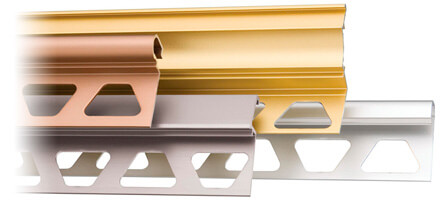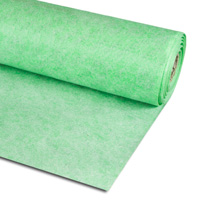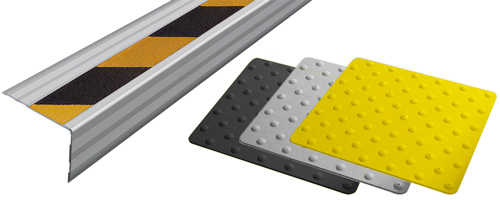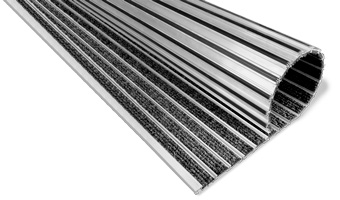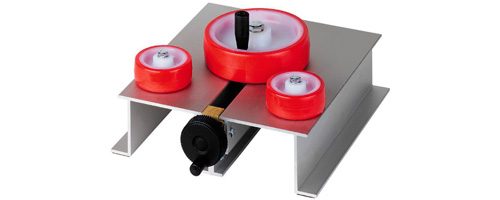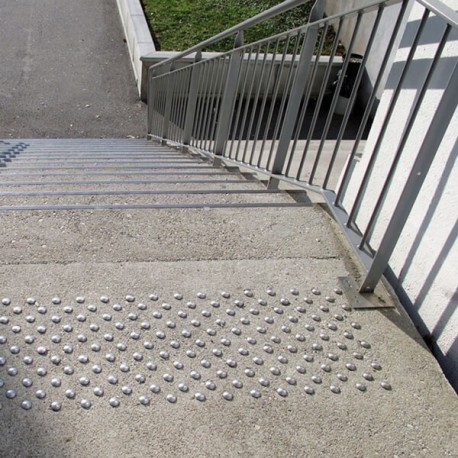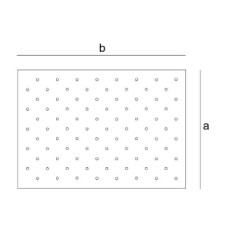The recessed tactile studs in zinc-plated steel or AISI 304 stainless steel have been designed to improve accessibility and as a warning solution to identify areas with obstacles, or areas where there is a change in height or unprotected opening, such as stairs and open platforms . Ideal for outdoor environments, and due to their tactile and non-slip texture, they are easily identifiable by users. Using the installation template, the size and arrangement of the installation holes is adjusted.
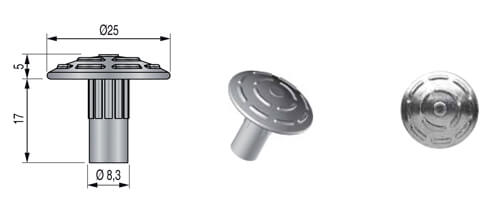
Applications
Tactile buttons designed for placement, according to a pattern, as a warning element against the risk posed by the edges of platforms, pedestrian crossings, beginning and end of stairs, among others, especially for the blind or visually impaired.
Placed at the beginning and end of stairs, they serve as a signaling element by means of tactile contrast thanks to the 5 mm projection.
These self-adhesive tactile buttons made of steel are suitable for outdoor placement.
Materials
Made of AISI 304 stainless steel or zinc-plated steel. Steel increases its resistance to impact and gives it a rough finish. This material has good wear resistance and durability.
Installation
The installation of a tactile paving is done easily. You can help with the placement template available as an option but recommended.
- Position the template on the ground and make sure it is correctly fixed and in its optimal position and mark the placement points.
- Drill the necessary holes and to the required depth.
- Clean and vacuum debris completely
- Insert the buttons into the holes with a little resin.

Cleaning and maintenance
The tactile pavement made of steel does not require excessive maintenance. Just use water and detergent or a specific neutral cleaner in solution. Outdoors the rains will exert a cleaning function.
The use of abrasive or stripping products as well as strong acids (hydrochloric and perchloric), strong bases (caustic soda or ammonia) or carbonated solutions are not recommended.

